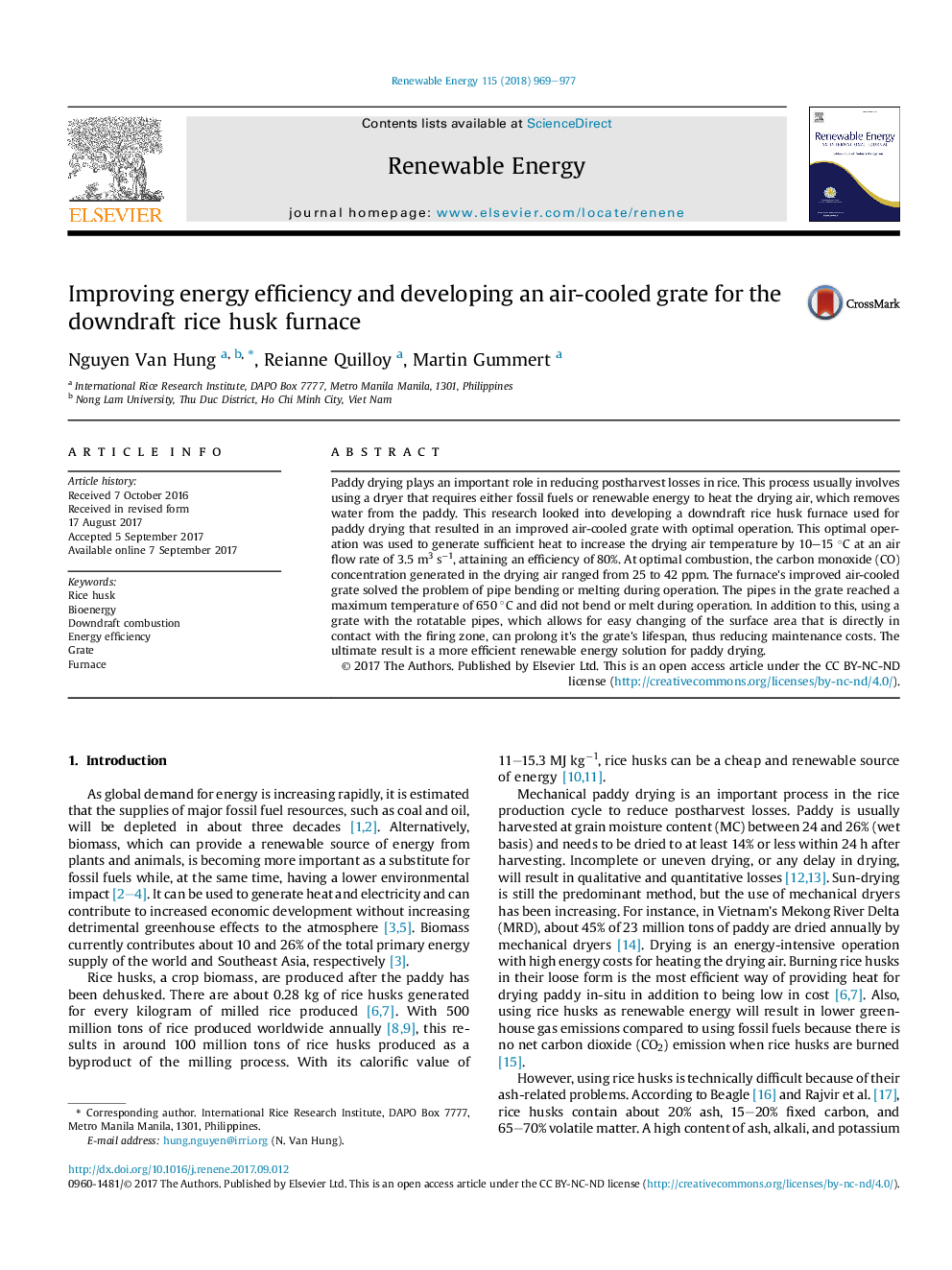| Article ID | Journal | Published Year | Pages | File Type |
|---|---|---|---|---|
| 6765316 | Renewable Energy | 2018 | 9 Pages |
Abstract
Paddy drying plays an important role in reducing postharvest losses in rice. This process usually involves using a dryer that requires either fossil fuels or renewable energy to heat the drying air, which removes water from the paddy. This research looked into developing a downdraft rice husk furnace used for paddy drying that resulted in an improved air-cooled grate with optimal operation. This optimal operation was used to generate sufficient heat to increase the drying air temperature by 10-15 °C at an air flow rate of 3.5 m3 sâ1, attaining an efficiency of 80%. At optimal combustion, the carbon monoxide (CO) concentration generated in the drying air ranged from 25 to 42 ppm. The furnace's improved air-cooled grate solved the problem of pipe bending or melting during operation. The pipes in the grate reached a maximum temperature of 650 °C and did not bend or melt during operation. In addition to this, using a grate with the rotatable pipes, which allows for easy changing of the surface area that is directly in contact with the firing zone, can prolong it's the grate's lifespan, thus reducing maintenance costs. The ultimate result is a more efficient renewable energy solution for paddy drying.
Related Topics
Physical Sciences and Engineering
Energy
Renewable Energy, Sustainability and the Environment
Authors
Nguyen Van Hung, Reianne Quilloy, Martin Gummert,
